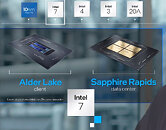
Two COLORFUL GeForce RTX 5060 Laptop Models Spotted in Benchmark Database
Just over two weeks ago, NVIDIA officially outlined a vague May launch window for GeForce RTX 5060 Mobile 8 GB dGPU-based partner-produced laptops/notebooks—"starting at $1099." Industry watchdogs reckon that a comprehensive product reveal will happen at Computex 2025. Team Green's mid-April PR article mentioned that models "are coming from every major OEM"—an included promotional image showcased devices built by Acer, ASUS, Dell, GIGABYTE, HP, Lenovo, MSI, and Razer. The ever watchful Olrak29 has unearthed two unannounced COLORFUL devices; listings have appeared within the Geekbench Browser database. A next-gen "P15 Pro" entry—published on April 20—posted an OpenCL score of 109431 (in Geekbench 6.4).
This leak lists a Intel Core i9-13900HX "Raptor Lake" CPU and an "NVIDIA GeForce RTX 5060 Laptop GPU." A more modern specced "iGame M15 Origo"—powered by Team Blue's Core Ultra 9 285HX "Arrow Lake" APU—option was also put through the Geekbench 6.4 wringer; this sample produced an OpenCL score of 102564 (on April 27). As observed by VideoCardz, the lower end "Blackwell" GPU beats its "Ada Lovelace" predecessor—GeForce RTX 4060 Mobile—by roughly 18% in overall OpenCL Geekbench gauntlets. Naturally, Vulkan-based scores would be better indicators of gaming performance. Early evaluators recorded maximum GPU clocks—of 2025 MHz and 2212 MHz (respectively)—on their GeForce RTX 5060 Mobile subjects.
This leak lists a Intel Core i9-13900HX "Raptor Lake" CPU and an "NVIDIA GeForce RTX 5060 Laptop GPU." A more modern specced "iGame M15 Origo"—powered by Team Blue's Core Ultra 9 285HX "Arrow Lake" APU—option was also put through the Geekbench 6.4 wringer; this sample produced an OpenCL score of 102564 (on April 27). As observed by VideoCardz, the lower end "Blackwell" GPU beats its "Ada Lovelace" predecessor—GeForce RTX 4060 Mobile—by roughly 18% in overall OpenCL Geekbench gauntlets. Naturally, Vulkan-based scores would be better indicators of gaming performance. Early evaluators recorded maximum GPU clocks—of 2025 MHz and 2212 MHz (respectively)—on their GeForce RTX 5060 Mobile subjects.



























































